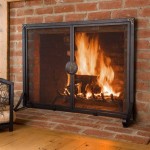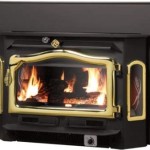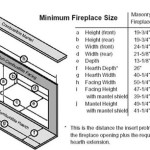Wood Burner Fireplace Ideas: A Comprehensive Guide
Wood-burning fireplaces have long been a focal point in homes, offering warmth, ambiance, and a connection to traditional heating methods. Modern implementations of wood burners blend functionality and aesthetics, providing a range of design options to complement various architectural styles. This article explores a variety of wood burner fireplace ideas, considering different styles, materials, and features to help homeowners make informed decisions.
The integration of a wood burner into a fireplace design requires careful consideration of safety regulations, ventilation requirements, and the overall aesthetic impact on the living space. A well-designed wood burner fireplace can significantly enhance the value and comfort of a home.
Choosing the Right Style of Wood Burner
The selection of a suitable wood burner style is a critical first step. Several options are available, each with distinct characteristics and advantages. Freestanding wood stoves offer flexibility in placement and can serve as a statement piece in a room. Insert wood burners are designed to fit into existing fireplace openings, providing an efficient upgrade to a traditional fireplace. Fireplace inserts often include features like blowers and catalytic combustors, enhancing heat output and reducing emissions.
Zero-clearance fireplaces, also known as factory-built fireplaces, are pre-engineered units that can be installed directly against combustible materials. These fireplaces offer a convenient and safe option for new construction or remodeling projects. They are thoroughly tested and certified to meet stringent safety standards.
The choice between these styles often depends on existing architectural features, desired heat output, and budget constraints. Freestanding stoves, for instance, can be more expensive to install if a chimney is not already present. Insert wood burners are generally less costly to install in homes with existing fireplaces. Zero-clearance options provide a balance of safety and convenience for new installations.
Beyond the basic type, the aesthetic design of the wood burner itself is important. Modern wood burners often feature clean lines and minimalist designs, while traditional models may incorporate ornate detailing and cast-iron construction. The finish of the wood burner, such as matte black, enamel, or metallic paint, contributes to the overall visual impact.
Material Selection and Design Considerations
The materials used in the construction of the fireplace and surround significantly impact the overall aesthetic and performance of the wood burner. Brick, stone, tile, and concrete are common choices for fireplace surrounds, each offering unique textural and visual qualities.
Brick provides a classic and durable option, available in a wide range of colors and finishes. Brick fireplaces can be designed to complement both traditional and contemporary decor. Stone offers a more rustic and natural aesthetic, with options ranging from fieldstone to stacked stone. The irregular shapes and textures of stone create a visually appealing focal point.
Tile provides a versatile option, available in virtually limitless colors, patterns, and sizes. Tile is also relatively easy to clean and maintain. Concrete provides a modern and industrial aesthetic, often used in minimalist designs. Concrete fireplaces can be poured in place or precast, offering flexibility in design and installation.
The size and shape of the fireplace surround should be proportionate to the size of the room and the wood burner itself. A large and imposing fireplace surround can overwhelm a small room, while a small surround may appear insignificant in a large space. The height of the fireplace should also be considered, ensuring a comfortable viewing angle from seating areas.
In addition to the surround, the hearth is an important element of the fireplace design. The hearth is the non-combustible area in front of the fireplace opening, providing a safe surface for embers and ash. Hearth materials should be durable and heat-resistant, such as brick, stone, or tile. The size of the hearth should comply with local building codes, providing adequate protection for the surrounding floor.
Mantels are another common feature of fireplace designs, providing a decorative shelf above the fireplace opening. Mantels can be made from wood, stone, or metal, and can be simple or ornate in design. The height and depth of the mantel should be carefully considered to ensure it does not obstruct the view of the fire or interfere with the operation of the wood burner.
Enhancing Functionality and Efficiency
Beyond aesthetics, several features can enhance the functionality and efficiency of a wood burner fireplace. Glass doors can significantly improve the efficiency of a fireplace by reducing air leakage and controlling the burn rate. Glass doors also provide a barrier against sparks and embers, improving safety.
Blowers can be installed to circulate warm air from the fireplace into the room. Blowers increase the convective heat output of the fireplace, providing more efficient heating. They are particularly useful in larger rooms or homes with poor insulation.
Catalytic combustors are devices that reduce emissions from wood burners. Catalytic combustors burn off unburned gases and particles, resulting in cleaner and more efficient combustion. Wood burners with catalytic combustors typically meet stricter emission standards and qualify for tax credits or rebates in some areas.
Air wash systems use a stream of air to keep the glass doors clean, providing a clear view of the fire. Air wash systems help to prevent soot and creosote buildup on the glass, reducing the need for frequent cleaning.
Dampers control the airflow through the chimney, regulating the burn rate and preventing drafts when the fireplace is not in use. A well-functioning damper is essential for the efficient and safe operation of a wood burner fireplace. Top-sealing dampers are more effective at preventing drafts than traditional throat dampers.
Wood storage is another practical consideration. Built-in wood storage niches or nearby wood racks can provide convenient access to fuel. Wood should be stored in a dry and well-ventilated area to prevent rot and insect infestation. Storing wood too close to the fireplace can be a fire hazard.
Proper insulation around the fireplace can also improve efficiency and prevent heat loss. Insulating the walls and ceiling surrounding the fireplace helps to retain heat within the room and reduce energy consumption. Fire-resistant insulation materials should be used near the fireplace to ensure safety.
Finally, regular maintenance is essential for the safe and efficient operation of a wood burner fireplace. The chimney should be inspected and cleaned annually by a qualified professional to remove creosote buildup. The wood burner itself should be inspected for any signs of damage or deterioration. Following the manufacturer's recommendations for maintenance and operation will help to prolong the life of the fireplace and ensure its continued safety.
Consideration of these factors ensures that the wood burner fireplace not only provides warmth and ambiance but also operates safely and efficiently, contributing to the overall comfort and value of the home.

Corner Wood Stove Mantel Decor Home Fireplace Burning Stoves Living Room

Know How Best Living Room Ideas With A Fireplace Arlo Jacob

Wonderful Cost Free Pellet Stove Living Room Strategies Wood Decor Corner Burning Stoves

20 Ideas To Decorate Around A Wood Burning Stove

20 Ideas To Decorate Around A Wood Burning Stove

Brick Wood Stove Hearth Ideas Chefkozmo Fireplace

Choosing A Wood Burning Stove Or Fire For Your Home Stovax Gazco

Wood Burner Vs Open Fire How To Fill Your Fireplace Fifi Mcgee

Woodburner Fireplace Ideas Design And Decor Inspiration

Fireplace Ideas For Wood Burner Stoves Burning Stove Fitters Inglenook Fireplaces N Fitting
Related Posts








